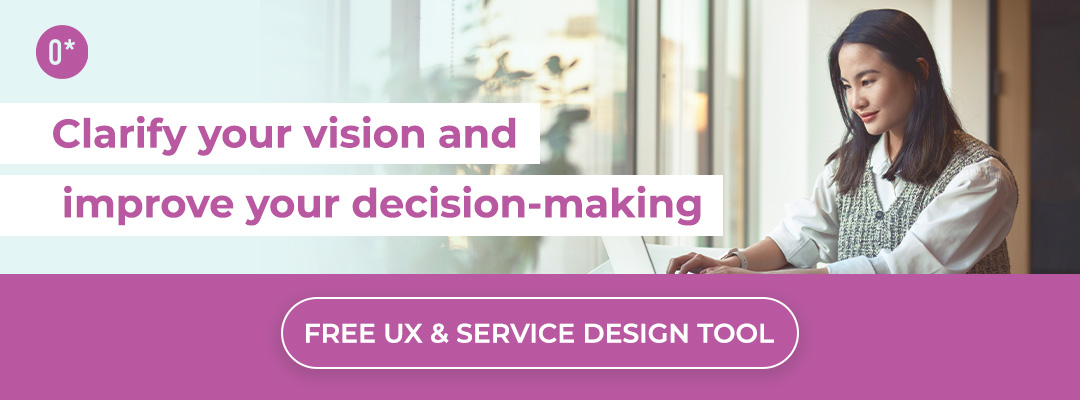The digital revolution arrived sooner than expected for many companies this year. Services and products were thrown online, business models changed overnight, and teams were relocated to home offices and asked to use (often new) digital tools. Workflows and business processes changed rapidly, and sometimes without adequate consideration for users and customers.
Research published in the Journal for Entrepreneurship, Management, and Innovation reveals that “the basis of each organization is primarily business processes, not products or services.” So what does this mean for your company in the midst of a digital transformation? How can a human-centered design (HCD) process help?
Internal Business Processes
Well, user experience (UX) design and research is more important than ever. Manual and clumsy workflows among teams and employees can affect service delivery and product development, which in turn impacts your overall customer experience. If your team is struggling to stay efficient right now, and if customers/users are finding it difficult to use (or seek help with) the services/products you offer, it might be time to sit down and investigate a more human-centered approach to your business processes.
Here are 5 steps you can take to integrate UX design and research into your organization to improve processes and workflows:
Step One: Identify key areas that need to be improved. You can do this by hosting a remote workshop or sending out a survey to employees/stakeholders to ask them what’s not working.
Look for processes that are:
-
Overly mysterious (as in, no one in the organization really knows how they work)
-
Often complained about internally
-
Big and hairy, usually involving cross-departmental collaboration
-
Directly related to customer support and/or experience
-
Manual, clumsy, and/or repetitive.
Step Two: Once you’ve identified processes that need help, spend time conducting internal research to better understand what’s really going on. This might involve remote interviews with employees, where you ask them to share their screen and show you exactly what they are doing. Get to know the ins and outs of these processes, the step-by-step flows, who is involved when, and what/where the big pain points are.
Step Three: Create an internal user journey map. Lay out the business process as an employee journey. Forget the typical “swim lanes” and “decision trees”––you’re looking to highlight, first and foremost, issues and opportunities. This journey map should be entirely from the employee’s perspective. What does a day-in-their-life look like? To begin, you can mock this up in something as simple as a spreadsheet. Check out our journey mapping blog series to learn more about how to do this from a HCD perspective.
View this post on Instagram
Click through for a sample journey map…
Step Four: Brainstorm new solutions to optimize the most painful and redundant parts of the internal user journey. Attempt to create an ideal journey that clears away repetitive, clumsy processes and workarounds for employees. Embrace automation, systems, and technology that will reduce/eliminate repetitive tasks. Also, make sure you don’t fall into some of the digital transformation traps that are common when making the transition to a tech-first business.
Step Five: Make a roadmap for implementation and find the tech solutions that will bring it all to life!
External Customer Experience (CX)
Once your internal processes are up to par, examine your customer experience (CX). We all know that e-commerce is booming, and right now no one wants to leave the house. Customers want access to everything they had before, but now they want it online and instantaneously, and they expect that experience to be smooth. So part of your digital transformation should also include making sure your online user experience is meeting customer/user expectations. Here are a few relevant tips to keep in mind while working on your UX and CX:
-
Mobile First. Ensure your mobile services are TOP NOTCH. According to Oberlo, nearly 70% of internet users prefer to browse for products and services on their smartphones.
-
FOCUS. Instead of making everything digital all at once, which can result in a poor user experience (we must walk before we can run after all), focus on developing a few key features that your customers really want, and do those really well. It’s still important to get a well functioning MVP off the ground first so your customers are satisfied and can trust that more good things are coming.
-
Reduce Friction. Wherever possible in a digital setting reduce the number of steps and amount of input you require from users before they checkout or sign-up. In other words, try to make tasks that relate to a user signing-up or purchasing products as seamless as possible. Don’t ask them for unnecessary information, like their phone number, unless you absolutely need it. With every additional “ask” you make, you risk having your users drop out of the sales funnel entirely and abandon their carts.
There are so many ways to integrate UX and a human-centered design process into your workflows and overall approach to business, especially in the digital realm. Don’t be afraid to start small and work your way up from there!
Learn more about planning and conducting great user interviews with Outwitly’s Plan a Stellar User Interview Workbook!
Resources we like…
-
Mastering Digital Transformation through Business Process Management in the Journal of Entrepreneurship, Management and Innovation (JEMI)
-
Joe Jackman’s new book The Reinventionist Mindset
-
Lean UX: Applying Lean Principles to Improve User Experience by Jeff Gothelf with Josh Seiden





